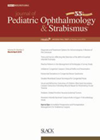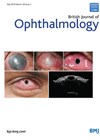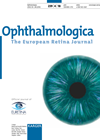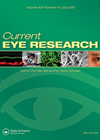
Journal Reviews archive for 2019
Predictive measure for alignment stability
The authors aimed to determine whether a correlation exists between the immediate operative alignment and future alignment in fixed suture strabismus surgery. This study enrolled 54 patients; seven were lost to follow-up so results are presented for 47 cases. Mean...
Albinism and later life visual development
This study aimed to evaluate whether best corrected visual acuity changed significantly in the second decade of life in those with albinism and the impact of extraocular muscle surgery and type of albinism on change in acuity during the second...
One muscle surgery
This is a review of current literature on unilateral strabismus surgery for small to moderate angle esotropia, exotropia, residual and consecutive strabismus and convergence or divergence insufficiency. The review considers recession surgery for eso / exotropia of angles up to...
Laser pointer maculopathy
The objective of this study was to describe the potential clinical presentations of retinal pathology resulting from exposure to laser pointers. The study included eight eyes of seven patients. Mean age was 18.7 years (12-36). Most were accidental self-inflicted while...
Surgical outcomes for intermittent exotropia of the same angle
The authors evaluated the long-term surgical outcomes and associated factors in patients with the same preoperative angle of deviation in intermittent exotropia after undergoing the same amount of bilateral rectus muscle recession. This was a retrospective review of 102 patients...
Postnatal weight gain as adjunct to ROP screening
The purpose of this study was to assess postnatal weight gain as a tool to stratify infants at risk of developing severe retinopathy of prematurity (ROP) in a US Midwestern neonatal ICU cohort. The authors sought to develop a simpler...
Medial rectus spontaneous reattachment after surgery
The authors report necropsy findings following free tenotomy of the medial rectus (MR) muscle in six postnatal monkeys. Bilateral MR tenotomy was performed producing alternating exotropia of 30-70 degrees with no adduction beyond primary position. Over follow-up, all showed reduction...
Steroid safety in MG treatment
This study was conducted to evaluate the efficacy and safety of low to moderate dose oral steroids in patients diagnosed with ocular myasthenia gravis (MG). This was a retrospective case series. The study reviewed 23 patients; 15 males and eight...
Features of AMD treatment non-responders
This is a retrospective consecutive case series of 365 eyes with age-related macular degeneration (AMD) who had three monthly intravitreal aflibercept treatments for at least 12 months. Responders were defined as complete resolution of exudation, intraretinal oedema, subretinal fluid, pigment...
Adjuvant intravitreal dexamethasone implant for persistent CME
In this retrospective, cross-sectional study the authors investigate the efficiency of intravitreal dexamethasone implants (0.7mg) for cystoid macular oedema (CME) persisting, despite immunomodulatory treatment in patients with Behcets’ disease (BD). Twenty-seven eyes of 20 patients (12 males and eight females)...
Injection of methotrexate into silicone oil-filled eyes for grade C PVR
Methotrexate (MTX) is an antineoplastic antimetabolite with immunosuppressant properties. Folate antagonism is known to contribute to the antiproliferative effects of MTX, and release of adenosine from cells and inhibition of polyamines may explain its anti-inflammatory effects. These activities contribute to...
The global burden of age-related macular degeneration
Age-related macular degeneration (AMD) is the third leading cause of blindness (behind cataract and refractive error). The authors present the results of the Global Burden of Disease (GBD) 2015 study, which included 195 countries. The disability-adjusted life years (DALY) due...








